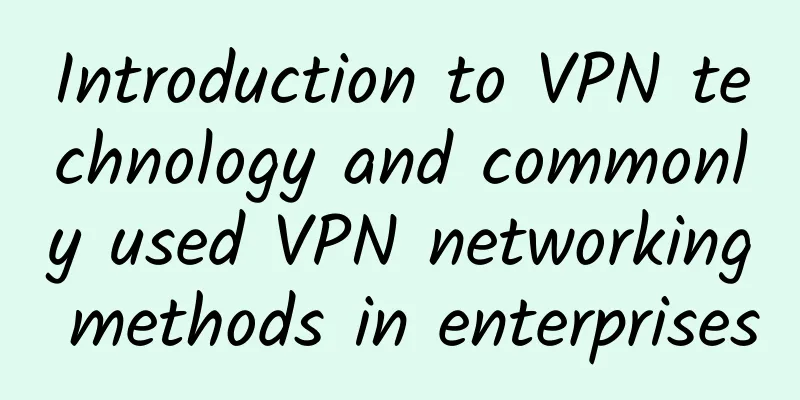Cloud Gateway for Home Computing Networks

|
Author: Tian Yang, Unit: China Mobile Smart Home Operation Center Labs GuideEntering the digital economy era, the amount of data brought by emerging technologies, applications, and scenarios continues to grow, and all walks of life have put forward more urgent demands for computing power and networks. As the main artery connecting users, data, and computing power, the network and computing power are increasingly integrated and symbiotic. As a result, the concept of "computing power network" has become increasingly popular. What exactly is a computing network? The computing network is a new type of information infrastructure that takes computing as the core, network as the foundation, and deeply integrates network, cloud, data, intelligence, security, edge, terminal, and chain (ABCD-NETS) to provide integrated services. In plain words, the computing power network is like an electric grid. Computing power is like electricity. In the electric power era, we built a "power grid" where we can use telephones, washing machines, rice cookers, electric fans, and televisions. In the world of artificial intelligence, computing power is needed for autonomous driving, face recognition, games, and videos to be used normally. Part 01 Background of the Birth of Cloud GatewayFor home users, the computing network currently provided by operators relies heavily on existing home access gateway devices to provide various services, such as basic Internet access functions and personalized value-added functions. However, as a hardware device, the home access gateway faces an 8-10-year replacement cycle due to equipment aging and maintenance issues. On the other hand, to meet the needs of various emerging businesses, the software system needs to be frequently updated and higher requirements are placed on hardware performance. In order to improve edge computing power, it is necessary to enhance the performance of access gateways and spend a lot of effort to continue upgrading proprietary software for online hardware. Currently, operators spend more than hundreds of billions of yuan each year on hardware purchases for home access terminals alone, and spend hundreds of millions of yuan on terminal software upgrades and adaptations, but still cannot solve the problem of rapid response to emerging value-added services for customers. At the same time, terminal hardware resources are ultimately limited, which is a single-point computing bottleneck and cannot meet the future computing power needs of home users. Part 02 What is a cloud gateway? The cloud gateway for home computing networks uses NFV and SDN technologies, based on the idea of edge cloudification of hardware gateway layer 3 and above functions and white-box terminals, to achieve cloudification of PPPoE, NAT, value-added service plug-ins and other functions. The terminal gateway functions are greatly simplified, and the services are no longer restricted by hardware systems and interfaces. The network logic architecture is shown in the figure below: Schematic diagram of the comparison of the logical architecture of existing home gateways and cloud gateways The above figure shows the three major components of the cloud gateway, namely the cloud gateway, white box gateway and cloud gateway capability platform. The functions of these three components are explained in detail below.
Part 03 Cloud Gateway FeaturesFeature 1: Cloud deployment
Cloud Gateway System Architecture Diagram Feature 2: Dual-speed networkDual-speed network diagram The cloud gateway can maximize the use of line resources and provide gigabit upstream and downstream rates for APPS in the edge DC. When users access the Internet, they can access it according to the package rate. While providing high-speed services to users/content service providers, all traffic is terminated at the edge DC, which will not cause a large load on the metropolitan area network egress, and the original access network only needs to expand the OLT. The cloud gateway provides a cost-effective "speed up and reduce fees" solution. The lines on the access side such as ONU/optical modem are often gigabit ports, but the user's package rate does not maximize the utilization of the link resources on this side. Edge DC and cloud gateway can maximize the utilization of idle bandwidth resources here. Feature 3: Smart DNSDeploying intelligent DNS services on the cloud gateway can intelligently provide users with the optimal access address based on their access source and destination, maximizing the advantages of network links. Smart DNS feature diagram Feature 4: Intelligent routingThe cloud gateway can support more than 400 protocols, more than 2,500 application fields, and network data flow feature fields. It can flexibly combine multiple fields to complete the routing of specific traffic; it provides flexible rule syntax and efficient matching. Intelligent business is driven according to the specified rules based on business characteristics to achieve intelligent routing and intelligent distribution. Part 04 Product Value of Cloud Gateway Cloud gateway products not only completely decouple the strong binding between home broadband customer services and hardware terminals, extend the boundaries of home LAN to the operator's cloud, and provide customers with various value-added services (such as cloud games, cloud NAS, cloud computers and other application services), but also help operators optimize home broadband network architecture, reduce the cost of new installation and maintenance of home broadband gateways, break through the single-point computing power bottleneck of terminal gateways and the difficulty of business adaptation, meet the needs of flexible business deployment and activation, and support emerging businesses and operating models.
|
<<: Let's talk about the TCP/IP protocol processing flow
>>: Research on scenario-based interoperability strategy based on 5G perception inflection point
Recommend
Is there still room for wireless mesh networking in the enterprise?
【51CTO.com Quick Translation】Wireless mesh networ...
Meituan second interview: TCP's four waves, can it be reduced to three?
Hello everyone, I am Xiaolin. I have posted this ...
The three major operators announced their operating data for October: the number of 5G package users exceeded 200 million
On November 23, the three major domestic operator...
These seven technology topics are the hottest in 2018. If you don’t know them, you’ll be out of date
USA Today reported that from ultra-fast 5G wirele...
In the new infrastructure era, intelligent connectivity is driving digital transformation into the fast lane
Bi Shouwen, Vice President of H3C Group and Presi...
spinservers: 100M-1Gbps unlimited traffic servers starting from $118/month, Dallas/Silicon Valley data centers available
spinservers is a site under Majestic Hosting Solu...
HostUS: Los Angeles VPS starts at $16 per year, with 8 data centers available including Los Angeles
It has been more than a year since I shared infor...
5G network actually interferes with weather forecasts?
While we are worried about not being able to affo...
Global Power over Ethernet Lighting Solutions
The world of smart buildings is undergoing a majo...
10 ways to deal with data center outages
While data centers are designed to not fail in th...
In the future, AI can be used for 5G network analysis
There are many blogs and vendor papers about 5G r...
How many Layer 2 networking technologies do you know?
1. Analysis of traditional STP technology applica...
The era of ubiquitous smart devices and edge computing is coming
Edge computing is on the rise. Are you ready for ...
As technology giants rush to enter the market, what kind of development will the satellite communications field usher in?
In recent years, the global satellite communicat...
HostYun: Unicom AS9929 line, minimum monthly payment starting from 18 yuan, maximum 500Mbps bandwidth, Los Angeles data center
AS9929 line is quite popular recently. China Unic...









